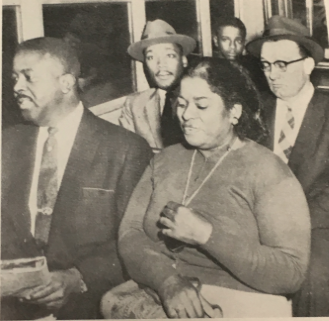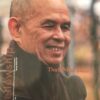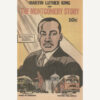In April 1947, Bayard Rustin and George Houser of FOR traveled with 14 other passengers—seven black, seven white—throughout North Carolina, Kentucky, Tennessee, and Virginia in order to challenge Jim Crow. The year before, the Supreme Court decided in a 7-1 decision in Morgan v. Virginia that drivers and police officers could not enforce state Jim Crow laws on people who had interstate bus and train tickets. Rustin and Houser, working through the Racial Industrial Department of FOR and the executive committee of the Congress of Racial Equality, decided to test this decision.
Traveling on Trailways trains and Greyhound buses, the eight white men sat in the rear, while the eight black men sat in the front. Predictably, the drivers questioned the men on each trip. Police officers made 12 arrests.
The Journey of Reconciliation is an important moment in FOR’s history. It’s an example of this organization’s commitment to combatting injustice with nonviolent direct action. For this reason alone, it makes sense to name a blog depicting moments in FOR’s history after these two weeks in 1947.
But this blog’s purpose is about more than simply discussing the past. It’s also about discussing the present and the future. This blog depicts moments in history, but its focus isn’t the moments themselves. It’s as much about the journey from the past to where we are now.
In name, the Journey of Reconciliation fulfills that idea. It suggests that we are on a journey to speak out against injustice. That reconciling differences takes time and movement. As a name, “Journey of Reconciliation” places history not in isolation but as points in a winding path.
The actual Journey of Reconciliation was also more than just a moment. It was the direct consequence of another moment (a Supreme Court Decision) and the predecessor of the Civil Rights Movement. The Fellowship of Reconciliation’s 1947 Journey of Reconciliation only happened because of Irene Morgan, a black woman  who defied a driver’s order to give up her seat in the back of a bus to a white couple. She went on to become the plaintiff in Morgan v. Virginia. The Journey of Reconciliation was a forerunner to the Freedom Rides, a series of nonviolent actions in which an integrated group that included Martin Luther King, Jr. and several other FOR members traveled to the Deep South on public transit in order to challenge Jim Crow laws.
who defied a driver’s order to give up her seat in the back of a bus to a white couple. She went on to become the plaintiff in Morgan v. Virginia. The Journey of Reconciliation was a forerunner to the Freedom Rides, a series of nonviolent actions in which an integrated group that included Martin Luther King, Jr. and several other FOR members traveled to the Deep South on public transit in order to challenge Jim Crow laws.
The techniques of nonviolent direct action that were the basis of the Journey of Reconciliation continue on in FOR’s work today. Whether opposing Islamophobia in their recent #GiveRefugeesRest campaign or speaking out against the state-sanctioned killing of Black people in the United States, the actions of Bayard Rustin and George Houser continue to influence this organization.
This blog is about the stories of FOR’s past— the F.B.I. surveillance on the organization, the forced resignation of Bayard Rustin, the campaign for more friendly U.S.-U.S.S.R. relations. It’s about the past, the present, and the future of FOR. It’s about our path and our journey.
Images: 1. Members of the 1947 Journey of Reconciliation, from the FOR Archives: The Freedom Rides. 2. Glenn Smiley and Martin Luther King, Jr. participating in the Montgomery Bus Boycotts. Fellowship Magazine, 1957. 3. Recent Bayard Rustin Fellow Rev. Osagyefo Sekou (front) at a Clergy March in Ferguson, Missouri.









